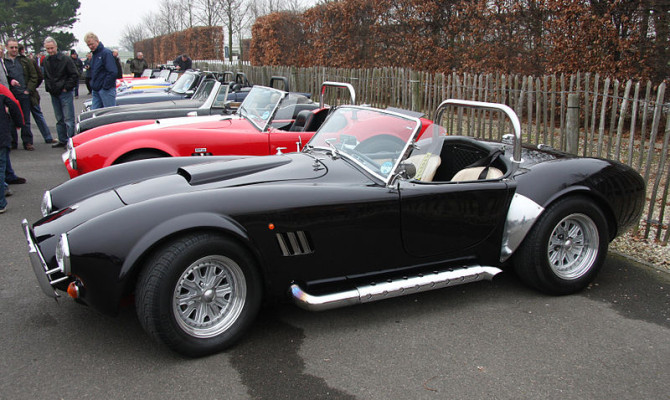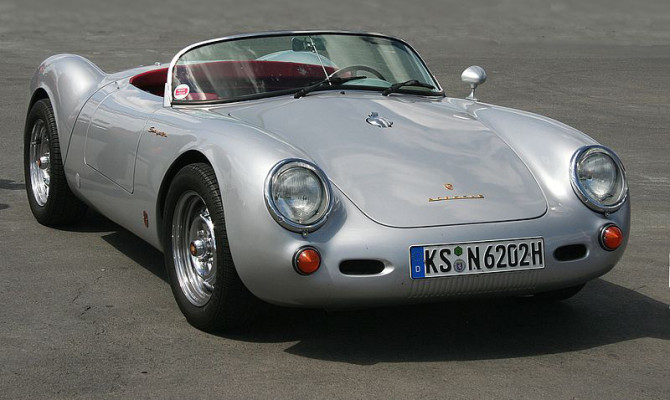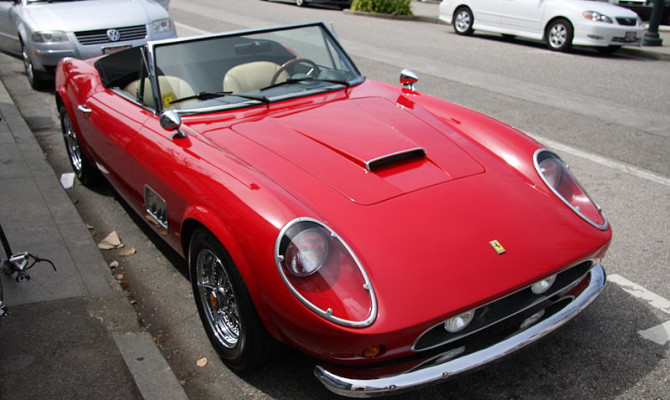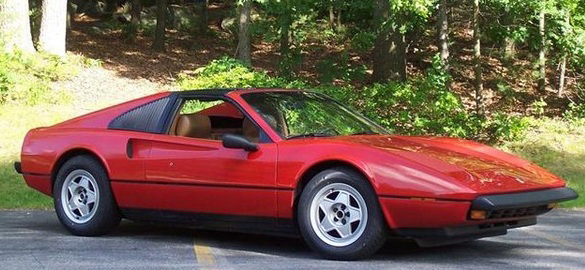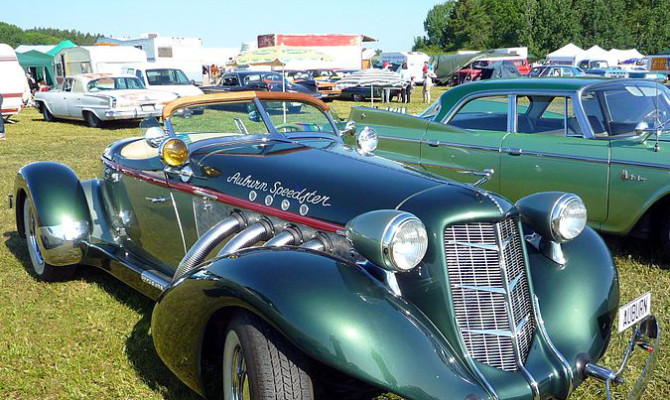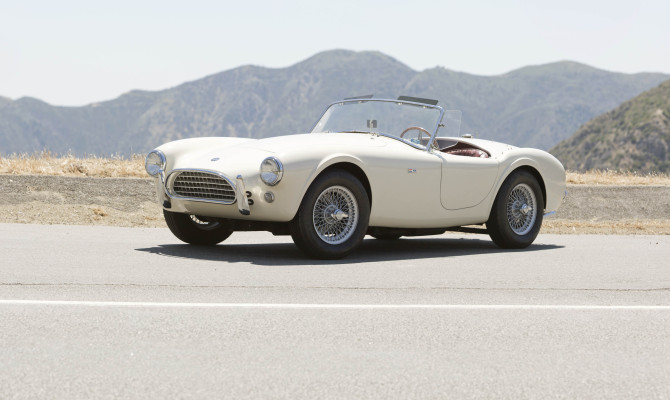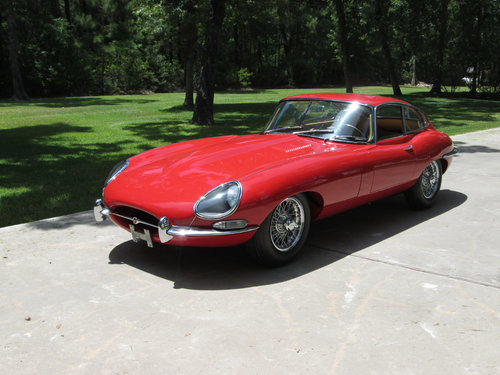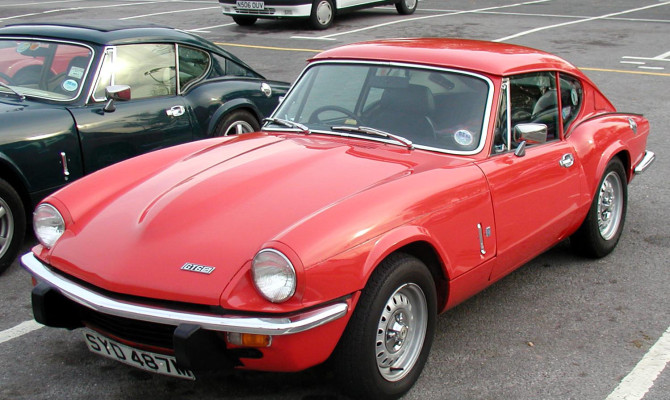Replicas are all good fun unless someone tries to pass one off as the real deal…
The classic car world is full of “coulda, shoulda, woulda” stories of people who had the opportunity to buy something when it was affordable only to see it sail out of reach.
If you didn’t buy a Shelby Cobra during the Nixon administration for 10 Grand, the only alternative for most people today is a replica. Replicas are all good fun unless someone tries to pass one off as the real deal. Here are five of the most common classic car counterfeits:
The Cobra might just be the most desirable sports car on the planet. Not coincidentally, it’s also the most replicated. With bulging, macho good looks; a big block Ford V-8; side pipes; shattering performance; and only around 300 originals made, it was a certainty from almost the beginning that supply and demand would never be equal. The originals have always commanded good money — by the late 1970s, they were approaching $50,000, and around that time, cottage industries sprang up everywhere to build Cobra replicas. Some were quite good while others bordered on undriveable. A lot depended on the skill (or lack thereof) of the builder.
Even Carroll Shelby, the car’s original creator, got into the act. Some argue that the 1992 Dodge Viper was the ultimate tribute to the Cobra. Fortunately, it’s really hard to pass off one of the replicas as the real deal; the Shelby Club maintains a registry of the real cars by serial number and history
*We believe that every classic car has a story. Tell us yours here.*
2. 1955 Porsche 550 Spyder
The 550 Spyder (of James Dean death car fame) and the more common bathtub-like Porsche 356 Speedster have a long history of being replicated. Vancouver company Intermeccanica makes very high quality Speedster replicas, while Beck in the U.S. has a great reputation for making 550 Spyder replicas. Because the originals were alloy and steel, respectively, and the replicas are fibreglass, there’s no danger of one being passed off as the real thing. Real 550 Spyders are $4 million or so and Speedsters can bring more than $300,000. Replicas can be had for around $30,000, which combined with the fact that they’re quite fun to drive explains their appeal.
3. 1961 250 GT Ferrari California Spyder
Before Ferrari got serious about cracking down on violations of its intellectual property rights, its products were among the most commonly knocked-off cars on the planet. A very bogus California Spyder built by a company called Modena Industries shot to fame as the hero car in “Ferris Bueller’s Day Off.”
About 50 were built between 1987 and 1989, before Ferrari said “basta!” Real ones start at about $9 million.
After the “Ferris Bueller” car, the Ferrari with the most screen exposure was the red Ferrari 308 GTS that Tom Selleck drove on “Magnum P.I.” Conveniently, as the 308 reached the apex of its fame via the TV show, Pontiac came out with the mid-engine Fiero, whose space frame design combined with non-stressed removable plastic body panels made it the ideal platform for conversions designed to simulate far more expensive mid-engine exotics. The most famous (or perhaps infamous) of these was the MERA, a replica of the Ferrari 308. While the proportions were off and the interior screamed cheap, we suspect that most of the then 20-something barflies taken in by the guy with gold chains and a polyester Hawaiian shirt driving the bogus 308 never suspected a thing.
5. 1935 Auburn 851 Speedster
Other than a slew of neoclassics that vaguely replicate Mercedes-Benzes of the 1930s, pre-war cars are seldom faked. But the Iconic Indiana-built Auburn Speedster (along with its equally stunning sister the Cord 810/812) is an exception. Lost count of how many companies have built replicas over the last 40 years are so. Like the Cobras, some are quite good and some exhibit the build quality of a Sochi hotel room. A replica Speedster featured in the opening scene of “Indiana Jones and the Temple of Doom.”
Rob Sass is the vice-president of content for Hagerty Insurance. Hagerty is the world’s leading specialist provider of classic car and boat insurance. Learn more at hagerty.ca and you can email rsass [at] hagerty [dot] com
The Pebble Beach auctions are generally not the place for bargain hunters.
It’s nothing unusual for $300 million in automotive merchandise to change hands with some lots bringing more than $10 million and a staggering 100-plus cars capable of cracking the $1 million mark.
Just 20 or 30 years ago, many of these cars were attainable to people of ordinary means. So what’s an ordinary mortal whose been priced out of the Ferrari and Cobra market to do? Look at some alternatives that provide 90 percent of the bang for 5 percent of the buck. Here are some of our favorites:
1963 Shelby Cobra/1992 Dodge Viper
Everybody loves a Cobra. Carroll Shelby’s idea of stuffing an American V-8 in a lightweight British sports car was an instant hit. The trouble is, if you didn’t buy one in the early 1980s when they were about $30,000, your chances of acquiring one are pretty slim for much less than a million. So, instead of a Cobra replica you’ll always have to make excuses for, why not buy its spiritual successor, the Dodge Viper? Early examples of this V-10 powered, raw and uncompromising, car can still be had for less than what Cobras were selling for 30 years ago.
1967 Ferrari 275 GTS/4 N.A.R.T. Spider/Intermeccanica Italia
One example recently sold for around $17 million. But unknown to most people, it has an American-powered near doppelganger that costs a fraction of the price.
Back in the 1960s, Canadian Frank Reisner dreamed of building Ferrari-like GT cars with American V-8 power. His Intermeccanica Italia roadster hit the mark in terms of Ferrari-like style — the bodies were even built in Italy — but in place of a complex and expensive V-12, most had small-block Ford V-8 power, with some tuned by the famous American race shop Holman and Moody.
About 400 Italias were built, and they’re not cheap (RM Auctions sold one in 2007 for $44,000). They cost a fraction of the Ferrari but have most of the looks and performance, if not the pedigree.
1965 Jaguar XKE coupe/1973 Triumph GT6
The Jaguar XKE is generally accepted as one of the prettiest cars of all time. And its great looks don’t come cheap. The first and most desirable series of the beloved XKE or E-Type now regularly brings more than $100,000. But few people know that fellow British sports car company Triumph made a three-quarter scale near replica of the E-Type, the Triumph GT6 that was also powered by a smooth and throaty straight six (albeit one that was half the size). About 10 grand buys a Triumph GT6 that many will mistake for a Jag.
Rob Sass is the vice-president of content for Hagerty Insurance. Hagerty is the world’s leading specialist provider of classic car and boat insurance. Learn more at hagerty.ca and you can email rsass [at] hagerty [dot] com
As venomous snakes go, Cobras are wicked cool… (more…)
I have no desire to wade into the minefield that is the eternal “chick car vs. dude car” argument.
But it’s self-evident that the cars on this list most definitely have a “Y” chromosome. In fact, they positively ooze testosterone:
1. 1966-67 Shelby Cobra 427
Many people aren’t aware of the fact that the fire-breathing Cobra actually started out as a rather delicate British sports car, the AC Ace. Carroll Shelby saw the potential, installed a 260-cubic-inch Ford V-8, and it was good. But a 427-cubic-inch NASCAR engine was even better along with side-pipes and fat fenders. Performance was blistering and so was the noise.
2. 1970-71 Plymouth Hemi ‘Cuda
The new (back then) Mopar E-body forever broke the association with the old economy Valiant, and the Barracuda and its stablemate, the Dodge Challenger, were low, wide and particularly menacing.
The 426 Hemi V-8 made it one of the baddest of all time.
3. 1968 Corvette L88
This is the Corvette that ordinary civilians weren’t supposed to be able to buy. It was designed for the track at a time when GM was observing an official racing ban. L88s had no creature comforts (not even a heater) and overheated in the briefest of traffic jams. To further discourage non-racers, GM underrated the horsepower of the 427-cubic-inch engine, reporting it at around 400 hp. In reality, it was well over 500 hp.
4. 1969-73 Ferrari 365 GTB/4 “Daytona”
The Ferrari Daytona was one of the last V-12 front-engine Ferrari GTs that Enzo Ferrari personally had a hand in.
For almost every year it was in production, it was the fastest road car available in the U.S. with a top speed of more than 172 mph. Racer Dan Gurney and journalist Brock Yates won the infamous cross-country Cannonball Run in a Daytona going coast-to-coast in just under 36 hours.
All of the controls from the ultra-heavy clutch to the unassisted steering are like a workout machine set on maximum resistance.
5. 1976-89 Porsche 930
The 930 was like a 911 on steroids. Literally.
Choose your favorite juiced ballplayer from the ‘roids era and compare his forearms to the 930’s aggressively flared fenders and you’ll get it. Performance was otherworldly for the time with 0-60 times of under four seconds and sub-14-second quarter-mile times, bettering all but the most muscular of Detroit muscle cars (albeit at a very steep price).
The 930 could also bite back hard. Its rear-engine and “on or off” turbocharger made it easy to spin.
Recent Comments
- { Enjoyed your Forest of Bowland in the BMW X5M, particularly the photo of the BMW in front of the main part of Stonyhurst College where... }
- { Bantam designed the Jeep, not Willy's or Ford. The American military gave the original Bantam prototype to Willys and Ford to copy. There is plenty... }
- { All Escalades come with a 6.2-lilter V8 engine that produces 420 horsepower. A six-speed automatic is the only transmission offered and drives the rear wheels.... }
- { Alexandra is an excellent journalist. }
Popular Posts
- Journey to a ‘Sparkling’ Luxury Okanagan Resort “Four lucky readers will put a Dodge Journey’s weekend-...
- The Need For Speed: Hike Those Highway Limits More than half of those polled believe the province sho...
- Drives-U-Crazy… Erratic drivers. An early morning drive from Kelowna to Vancouver is nor...
- Readers Respond: The Pros and Cons of Increasing B.C. Speed Limits Increasing the speed limits will only increase risk to...
- Honda CR-V Review: The Compact Crossover To Get Things Done The CRV is a very stylish and aerodynamic crossover veh...


